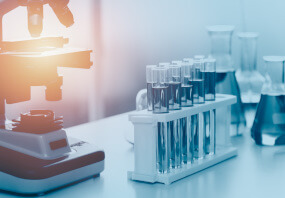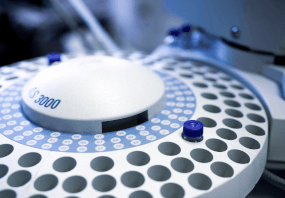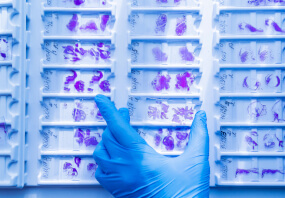General description
Interferon regulatory factor 9 (UniProt: Q61179; also known as IRF-9, IFN-alpha-responsive transcription factor subunit, ISGF3 p48 subunit, Interferon-stimulated gene factor 3 gamma, ISGF-3 gamma, Transcriptional regulator ISGF3 subunit gamma) is encoded by the Irf9 (also known as Isgf3g) gene (Gene ID: 16391) in murine species. IRF-9 is a transcription factor that mediates signaling by interferon-alpha and beta. It contains 1 IRF tryptophan pentad repeat DNA-binding domain Following binding of these interferons to cell surface receptors, JAK kinases (Tyk2 ad JAK1) are activated that lead to tyrosine phosphorylation of STAT1 and STAT2. IRF-9 then associates with phosphorylated STAT1:STAT2 dimer to form the interferon-stimulated gene factor 3 (ISFG3) complex that translocates to the nucleus and binds to the interferon stimulated response element (ISRE) to activate the transcription of interferon-stimulated genes. In mice, ablation of IRF-9 is shown to block the proliferation and migration of vascular smooth muscle cells (VSMC) and attenuates intimal thickening in response to injury. On the other hand, IRF-9 gain-of-function is reported to promote VSMC proliferation and migration that can aggravates arterial narrowing. (Ref.: Zhang, SM et al (2015). Nat Commun. 6:6882).
Specificity
Clone 6F1-H5 detects interfereon regulatory factor 9 (IRF-9) of 51 kDa in murine species. May also detect shorter variants of IRF-9.
Immunogen
Epitope: N-terminus
His-tagged full length recombinant longer version (465 amino acids) of murine Interferon regulatory factor 9.
Application
Anti-IRF-9, clone 6F1-H5, Cat. No. MABS1920, is a mouse monoclonal antibody that detects Interferon regulatory factor 9 (IRF-9). It has been tested for use in chromatin Immunoprecipitation and Western Blotting.
Chromatin Immunoprecipitation: Chromatin Immunoprecipitation was performed on a representative lot with wild -type or IRF9 knock-out bone marrow derived marcrophages (uninduced or treated with IFN beta). (Data courtesy of Prof. Thomas Decker, Ph.D., University of Vienna, Austria).
Research Category
Signaling
Quality
Evaluated by Western Blotting in mouse spleen tissue lysate.
Western Blotting Analysis: 0.5 µg/mL of this antibody detected IRF-9 in 10 µg of mouse spleen tissue lysate.
Target description
~51 kDa observed. 44.61 kDa calculated. Uncharacterized bands may be observed in some lysate(s).
Physical form
Format: Purified
Protein G purified
Purified mouse monoclonal antibody IgG2a in buffer containing 0.1 M Tris-Glycine (pH 7.4), 150 mM NaCl with 0.05% sodium azide.
Storage and Stability
Stable for 1 year at 2-8°C from date of receipt.
Other Notes
Concentration: Please refer to lot specific datasheet.
Disclaimer
Unless otherwise stated in our catalog or other company documentation accompanying the product(s), our products are intended for research use only and are not to be used for any other purpose, which includes but is not limited to, unauthorized commercial uses, in vitro diagnostic uses, ex vivo or in vivo therapeutic uses or any type of consumption or application to humans or animals.
- UPC:
- 51442721
- Condition:
- New
- Availability:
- 3-5 Days
- Weight:
- 1.00 Ounces
- HazmatClass:
- No
- MPN:
- MABS1920












